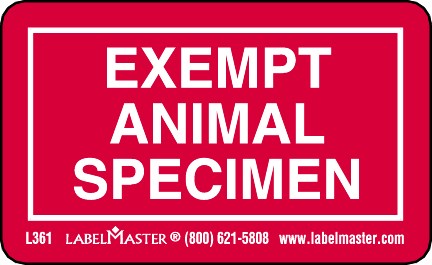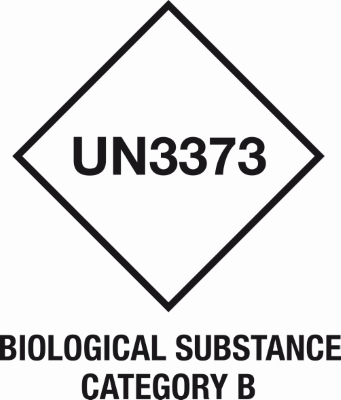
The 5 key questions in diagnostic testing: what, where, when, why, and how
By Julie Allen, BVMS, MS, MRCVS, DACVIM (SAIM)

Send-out diagnostic tests are more readily available in veterinary medicine, and veterinarians often rely on their technicians to know what samples to take and where to send them. Unfortunately, veterinarians are often too busy to explain why they want to perform such tests and what the results could mean.
Endocrine tests
Commonly submitted endocrine tests include low dose dexamethasone and ACTH stimulation tests. Sometimes veterinarians request more obscure tests, such as an inhibin level. Inhibin is a hormone that is synthesized and secreted predominantly by ovarian granulosa and testicular Sertoli cells, but is also produced by the adrenal glands. It is used in the diagnosis of pheochromocytoma, a tumour of the adrenal medulla that produces excessive amounts of catecholamines.
Acromegaly is an overproduction of growth hormone, usually from a pituitary adenoma, and is a cause of insulin resistance and diabetes mellitus in cats. As there is no commercially available GH assay in North America, we often measure insulin-like growth factor (IGF-1). IGF-1 values greater than 1000ng/mL are expected in cats with acromegaly. This test can also be used to aid in the diagnosis of pituitary dwarfism, where IGF-1 levels are low, but the diagnosis is not definitive.
Occasionally veterinarians are presented with animals that are displaying signs of sexual behaviour despite being previously neutered, or their reproductive status is unclear, as the pet has been rescued. Measuring anti-Müllerian hormone can be helpful in diagnosing ovarian remnant syndrome (or cryptorchidism) and to determine if an animal is unneutered. A negative test suggests that the animal is a spayed female. If positive, it is highly accurate in cats for detecting ovarian remnant syndrome, however some false negatives occur in dogs. It is recommended that a concurrent progesterone level be performed if clinical signs indicate a remnant, or if the dog has been previously spayed.
Urinary tests
The best available global estimate of renal function is the determination of glomerular filtration rate (GFR). An ideal filtration marker should be freely filtered at glomerulus, not protein bound, not metabolized within the body, exclusively renally cleared, have negligible non-renal excretion, have no tubular secretion or reabsorption, be non-toxic, and not itself alter GFR. Iohexol, a radiographic contrast material, meets these criteria. A single injection of iohexol is given and serum samples taken at 2, 3, and 4 hours post-dose. A computerized model is utilized to calculate GFR in cats and dogs and results are given as clearance in ml/min/kg, as well as percentage reduction in GFR relative to a cohort of normal animals from the same species. Patients should be well hydrated and food withheld 12 hours prior to the test, and the test should not be performed if the creatinine is already increased above the reference interval.
The symmetric dimethylarginine (SDMA) test is used in the diagnosis of early kidney disease and is performed only by IDEXX. SDMA is almost exclusively eliminated by renal filtration and therefore is a good estimate of GFR. It detects on average 40% or greater loss of kidney function versus 75% for creatinine. SDMA is unaffected by lean body mass, which can lead to a decreased creatinine in old or cachexic animals. A persistent increase above 14 μg/dl suggests reduced renal function.
General sample-handling guidelines
- Most blood tests require a minimum 12-hour fast
- Lipemia and hemolysis should be avoided as they may lead to assay interference
- Serum should be separated from the clot and transferred to a new tube
- Any tubes containing liquid should be wrapped in enough absorbent material to absorb the contents in case of a spill
- Samples should be placed in a plastic bag before packaging into a third container
- Most samples need to be kept cool so at least one gel pack should be included
- If samples need to be shipped frozen, dry ice will be required (FedEx is the only carrier that will ship dry ice)
- For air shipments, verify that the container can sustain atmospheric pressure changes
- All specimens must be labelled and a completed submission form included. Most send-out tests should be labelled as an “Exempt Animal Specimen” (Figure 1) unless the sample is potentially infectious, then the label in Figure 2 should be affixed. If certain infectious diseases are suspected, special packaging and labelling is required


Figures 1 and 2
Pancreatic and gastrointestinal tests
Pancreatitis is a common condition seen in veterinary practice and is sometimes a challenge to diagnose. The pancreatic lipase immunoreactivity (PLI) test is considered by most to be the gold standard, in combination with clinical findings, routine lab work, ultrasound, etc. In dogs, levels greater than 400 µg/L are consistent with pancreatitis, whereas in cats, levels 5.4 µg/L or greater are most consistent.
Antech® Diagnostic’s test for pancreatitis, the Precision PSL™, or DGGR lipase is believed to be more sensitive and specific than general lipase assays. Some studies suggest substantial agreement with the pancreatic lipase immunoreactivity, however this is controversial and others feel it is not pancreas specific. Regardless, the test should always be interpreted with other clinical and diagnostic findings. The reference intervals in dogs and cats are 24-140 U/L and 8-26 U/L respectively.
In contrast, the trypsin-like immunoreactivity (TLI) test detects both trypsinogen and trypsin and is used in the diagnosis of exocrine pancreatic insufficiency (EPI). Trypsinogen is synthesized exclusively by acinar cells of the pancreas and is an excellent indirect index of pancreatic function. In dogs, values less than 2.5 µg/L are diagnostic for EPI. In cats, values 8.0 µg/L or less are diagnostic for EPI.
Cobalamin (B12) is a water-soluble cobalt-containing vitamin. Deficiencies affect purine and pyrimidine synthesis. Measuring these vitamins enables detection of intestinal malfunction/bacterial overgrowth. A decreased cobalamin level suggests distal small intestinal disease, exocrine pancreatic insufficiency, or small intestinal dysbiosis. An increased folate level suggests small intestinal dysbiosis; a decreased level suggests proximal small intestinal disease.
Oncology tests
PCR for antigen receptor rearrangement (PARR) evaluates DNA to distinguish reactive from neoplastic lymphocyte expansions. DNA is extracted from cells and the gene sequences of T-cell or B-cell receptors amplified. If a population of lymphocytes is clonal (i.e. lymphoma), a single receptor is amplified. If a population is polyclonal (i.e. reactive), multiple receptors are amplified with multiple bands on PCR.
Flow cytometry is also used to diagnose and immunophenotype lymphoid neoplasia. Flow cytometry evaluates the proportion of each cell type present (i.e. B-cell vs. T-cell), allowing determination of cell lineage and whether it is more likely neoplasia versus a reactive process. The phenotype is also prognostic and may alter treatment.
Infectious disease tests
It is important to determine if there is a bacterial component in certain diseases. One technique is fluorescent in situ hybridization (FISH). A fluorescent probe binds to bacterial ribosomes in tissue sections and is visualized using a fluorescent microscope. This technique can identify bacteria within formalin fixed tissues.
There have been increased numbers of reports of influenza in dogs including sporadic outbreaks of H3N8 and H3N2. As a result, performing a Canine Influenza PCR and/or Hemagglutination Inhibition (HI) titre is recommended to identify exposure to canine influenza virus. A positive PCR is supportive of infection; a negative may be truly negative, missed viral shedding, or reflect degradation of RNA. A convalescent HI titre after 10-14 days that demonstrates a 4-fold increase is consistent with infection.
Summary
Numerous diagnostic tests are available, and sometimes knowing which test to run can be overwhelming. Many laboratories perform these tests – be sure you are sending the correct assay to the appropriate laboratory. Also, it is vital to understand when a test can and cannot be performed. For example, do not submit an inhibin level on an intact male dog. It is also important to understand that no test is perfect; false positive and negative results can occur so be sure to correlate results with other clinical and diagnostic findings. When submitting a diagnostic test, remember the five key questions – what, when, where, why, and how.CVT




